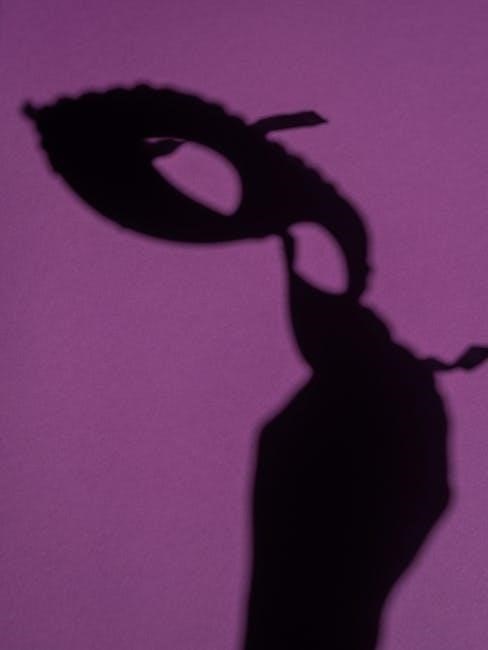Ball python morphs are unique variations of Ball Pythons with distinct patterns and colors, created through selective breeding, with over 7500 morphs existing, including various pattern combinations and colors, in the guide to ball python morphs.
Definition and Overview
A guide to ball python morphs provides an understanding of the diverse range of colors and patterns exhibited by these snakes. Ball python morphs are essentially genetic variations that occur naturally or through selective breeding, resulting in unique visual characteristics. The definition of a morph encompasses any distinct difference in appearance, including color, pattern, or scale texture. An overview of ball python morphs reveals a complex and fascinating world, with new morphs being discovered and developed continuously. This complexity is a result of the genetic diversity within the ball python population, allowing breeders to create an astonishing array of visual traits. By exploring the definition and overview of ball python morphs, enthusiasts can gain a deeper appreciation for the intricate beauty and diversity of these remarkable creatures, and understand the basics of their genetic makeup and variation. This knowledge is essential for anyone interested in ball pythons.

Types of Ball Python Morphs
Ball python morphs include various pattern and color types, such as normal, albino, and pastel, with new ones emerging constantly in the guide to ball python morphs every day online.
Common Morphs
Some common ball python morphs include the Mojave, Superman, and Phantom, which are popular among breeders and enthusiasts. These morphs are known for their unique patterns and colors, and are often used as a starting point for creating new and exciting combinations. The Mojave morph, for example, is a popular choice for its striking pattern and vibrant colors. Other common morphs include the Pastel and the Champagne, which are prized for their delicate and subtle coloration. These morphs are widely available and are a great option for those looking to add a new ball python to their collection. With so many different morphs to choose from, it’s easy to find the perfect one to suit your tastes and preferences. The variety of common morphs is vast and diverse, offering a range of options for ball python enthusiasts. Many breeders specialize in these common morphs.

Ball Python Morph Combinations
Morph combinations create unique patterns and colors, offering various possibilities for ball python enthusiasts and breeders to explore and discover new traits and characteristics naturally.
Naming Conventions
The naming conventions for ball python morphs are often determined by the breeder who first creates the combination. This can lead to a wide range of names, some of which may be similar or confusing. As a result, it is essential to understand the naming conventions used in the ball python community to avoid confusion and ensure accurate identification of morphs. The International Herpetological Society and other organizations have established guidelines for naming morphs, but these are not always followed. Breeders often choose names based on the appearance or characteristics of the morph, which can lead to creative and descriptive names. However, this can also result in multiple names for the same morph, causing confusion among enthusiasts and breeders. A standardized naming system would help to clarify the identification of ball python morphs and facilitate communication within the community. Naming conventions play a crucial role in the identification and classification of ball python morphs.

Blue Eye Leucistic Complex
Blue Eye Leucistic ball pythons have pale skin and blue eyes, resulting from genetic combinations, with Mojaves and Lesser Platinums producing Leucistics when bred together, in the guide to ball python morphs.
Related Morphs
Several ball python morphs are closely related to the Blue Eye Leucistic Complex, including Mojaves, Lesser Platinums, and Russo-line Het Leucistics. These morphs can produce Leucistics when bred to the same morph or to other related morphs. The combination of these morphs can result in a variety of unique and interesting patterns. Ball python breeders often experiment with different combinations of morphs to create new and exciting patterns. The related morphs can be used to create a wide range of colors and patterns, from pale skin and blue eyes to more vibrant and complex designs. By understanding the related morphs, ball python enthusiasts can better appreciate the complexity and diversity of the Blue Eye Leucistic Complex. This knowledge can also help breeders to create new and interesting morphs, and to better understand the genetics behind the Blue Eye Leucistic Complex.

Responsible Breeding Practices
Reputable breeders prioritize animal welfare, genetics, and diversity in their breeding programs, ensuring healthy ball python morphs, with proper care and handling, for a sustainable pet trade, and conservation.
Considerations for Buyers
When purchasing a ball python morph, it is essential to consider several factors to ensure a healthy and happy pet. Buyers should research the breeder and their reputation, as well as the morph’s genetic history and potential health issues. They should also consider the snake’s age, size, and temperament, as well as the level of care and handling required. Additionally, buyers should be aware of the morph’s market value and ensure they are not overpaying. It is also crucial to consider the long-term commitment of owning a ball python, as they can live up to 30 years in captivity. By taking the time to carefully consider these factors, buyers can make an informed decision and find the perfect ball python morph to join their family, with proper care and attention, for a rewarding pet experience, and a lifelong companion.